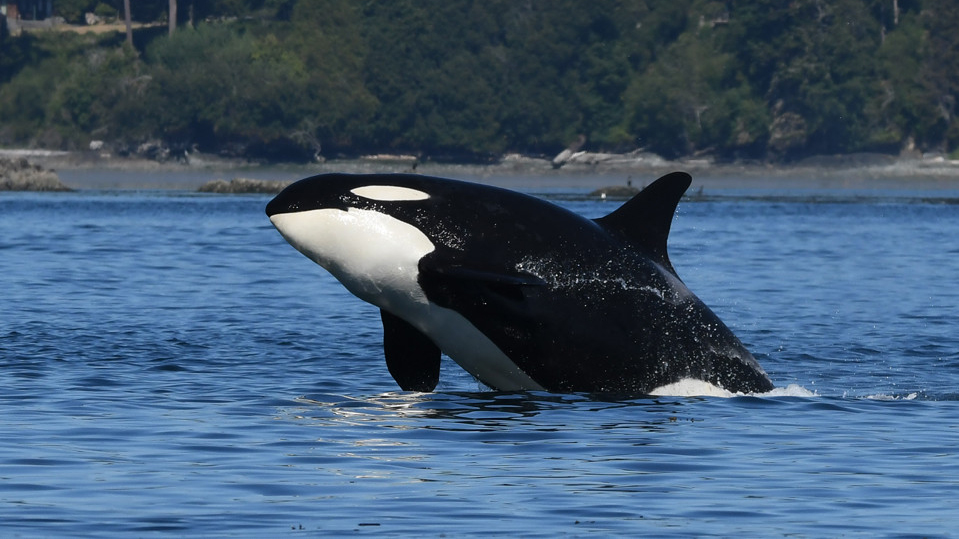'Grandma' killer whale missing from pod, feared dead
The female orca known as L47 was last seen in February.

An aging killer whale "grandmother" in a large, extended orca family in the northeastern Pacific Ocean hasn't been seen in months and is thought to have died.
The orca (Orcinus orca), known as L47, was one of the most prolific females in the Southern Resident clan; she gave birth to seven calves that lived long enough to receive their own alphanumeric "names," more than any other Southern Resident female has produced, representatives of the Center for Whale Research (CWR) said in a statement.
The Southern Resident group is made up of three pods — J, K and L — of closely related whales that swim in waters near British Columbia, Washington and Oregon. Each pod centers around an older female, and at 47 years old, L47 was a long-standing matriarch in the L pod, according to the statement.
Related: Image gallery: Russia's beautiful killer whales
On Sept. 20, CWR representatives reported that L47 was missing from their 2021 census for Southern Resident killer whales. She was last spotted Feb. 27 in Swanson Channel near British Columbia, and while she did not appear malnourished or in distress, she was not seen again in surveys conducted during the early summer in the Strait of Juan de Fuca, a body of water connecting the Salish Sea to the Pacific Ocean.
Nor was she observed in September, when CWR researchers repeatedly encountered and photographed L47's L pod kids and grandkids. "Her repeated absence meets our criteria for declaring a whale missing and likely deceased," CWR representatives wrote in the statement.
Two of L47's adult daughters are still alive, and the daughters have sons of their own. (Female orcas reproduce until they are about 40 years old, according to the National Oceanic and Atmospheric Administration (NOAA)). L47 also leaves behind a roughly 10-year-old son, named L115.
Sign up for the Live Science daily newsletter now
Get the world’s most fascinating discoveries delivered straight to your inbox.

Killer whale pods depend on their matriarchs for leadership, especially when salmon is hard to find, and L47's death could spell trouble for the pod's youngest and most vulnerable members, who rely on older females to make sure that the youngsters get enough to eat, according to the statement.
"Her son, L115, is at an approximately three times greater risk of death in the next two years than a male of the same age would be with a surviving mother," CWR representatives said.
L47's presumed death brings the number of Southern Resident killer whales to 74 individuals, but that number represents just a small fraction of killer whales worldwide. While some orca populations, including the Southern Resident clan, have declined in recent decades, there are an estimated 50,000 orcas globally, and about 2,500 of them live in northeastern Pacific waters, NOAA says.
Originally published on Live Science.

Mindy Weisberger is an editor at Scholastic and a former Live Science channel editor and senior writer. She has reported on general science, covering climate change, paleontology, biology and space. Mindy studied film at Columbia University; prior to Live Science she produced, wrote and directed media for the American Museum of Natural History in New York City. Her videos about dinosaurs, astrophysics, biodiversity and evolution appear in museums and science centers worldwide, earning awards such as the CINE Golden Eagle and the Communicator Award of Excellence. Her writing has also appeared in Scientific American, The Washington Post and How It Works Magazine. Her book "Rise of the Zombie Bugs: The Surprising Science of Parasitic Mind Control" will be published in spring 2025 by Johns Hopkins University Press.









